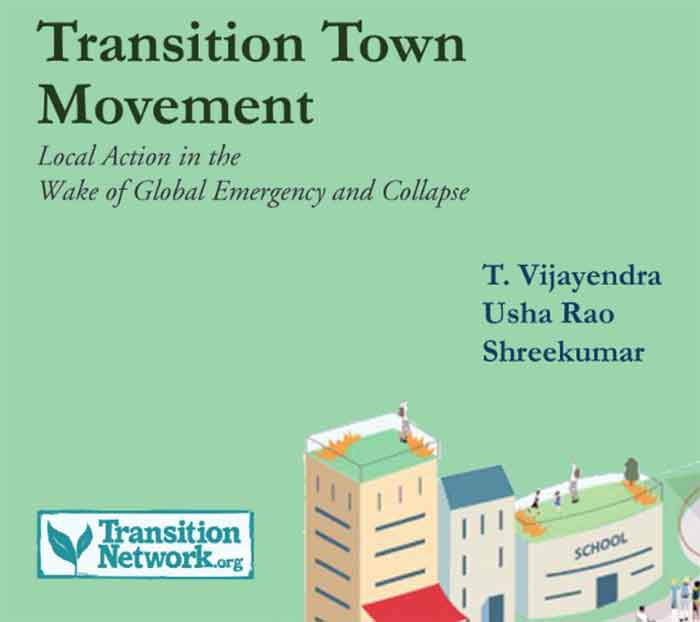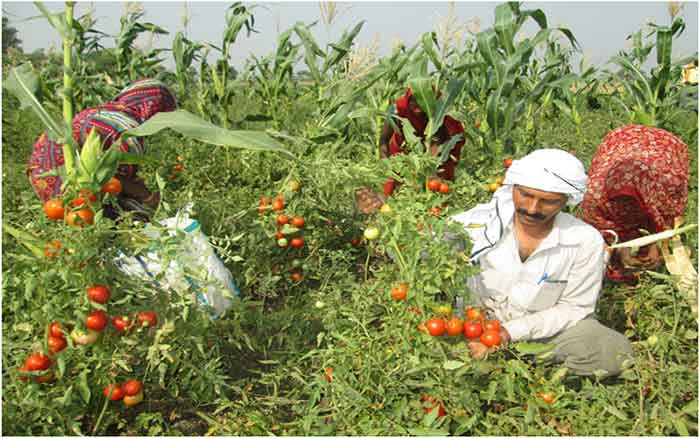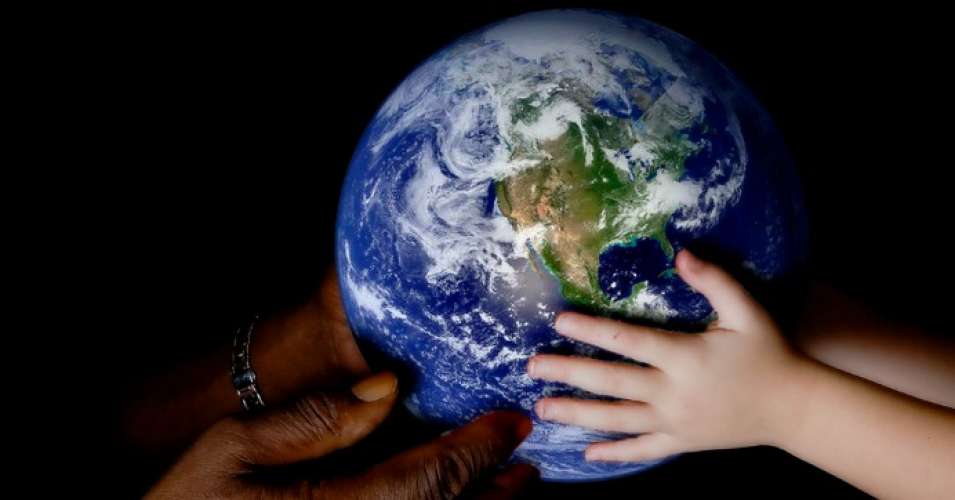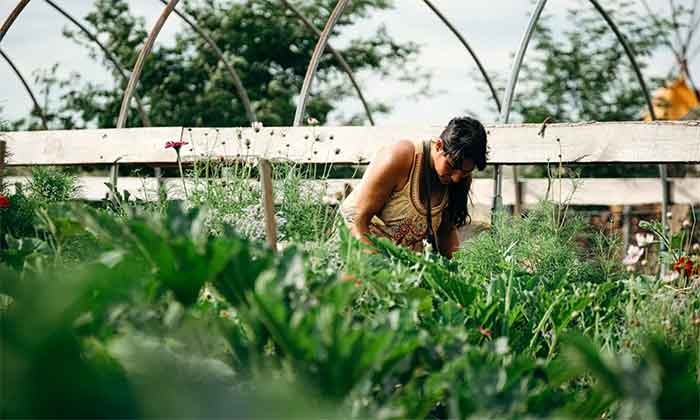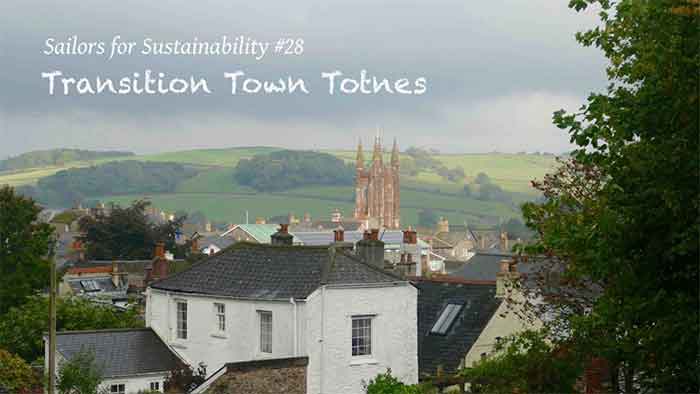
This is the complete text of the talk that was delivered under the auspices of the Vivekananda Chair, Mahatma Gandhi University, Kottayam, Kerala, on 27th May, 2023.
This talk is in three parts: Part I: Global Emergency and End of Modern Technology and Alternatives, Part II: Meaning and History of Transition and Part III: Transition in India.
Part I and II will be published on one day. Part III will be published on the next day. This Introduction will be repeated. All the references are given at the end of the complete article on Day 2.
Introduction
The world is going through a Global Emergency. This has several aspects to it – Resource Depletion, Global Warming, Ecological Degradation, Growing Inequality and Social Unrest. The primary cause of this emergency is the current crisis of capitalism which began with the 2008 financial meltdown. The response of capitalism to this Global Emergency is the current ‘project of global capital’, the so-called The Fourth Industrial Revolution which is doomed to fail. Another response is Transition Town movement. It is an initiative or model that refers to grassroots community projects. The aim is to increase self-sufficiency to reduce the potential effects of peak oil, climate destruction, and economic instability. This is done through re-localization strategies, especially around food production and energy usage, taking us from the present capitalist/industrial stage of society to an alternative stage. In Part III we will have a look at the possibility of transition in India.
Part I
Global Emergency and End of Modern Technology and Alternatives
The world is going through a Global Emergency. This has several aspects to it – Resource Depletion, Global Warming, Ecological Degradation, Growing Inequality and Social Unrest. We will discuss them one by one below, along with their relation to each other.
Resource Depletion
Human society uses natural resources for its survival and reproduction. Other living beings depend directly or indirectly on plant resources which are renewable. In addition to these, human beings also use non-renewable resources including minerals such as coal and petroleum and metals such as gold, silver, copper and iron, coal. They are considered non-renewable because their quantity is fixed and the more we use them the less of them are left to use. For industrial societies, petroleum and coal are the basic sources of energy and their depletion can spell the end of industrial society.
Now, there is a law of extraction of these non-renewable resources. It was first discovered in the case of oil by M. King Hubbert and is called, ‘Peak Oil’. It says that when half the resources are extracted (taken out), then the production will start falling. That is, the peak of production occurs when half the oil is taken out. It applies to a particular well, to a region, to a country, and to the whole world. Today, it has been found that it applies to all such mineral resources and scientists have calculated the peak year for almost all the important minerals. And, hold your breath; the overwhelming majority of them will peak before 2030, starting with oil! The data is almost accurate and might differ only by a few percentage points, but the fact remains that the years of industrial society as it exists is numbered and the end will come in a decade or so. The collapse of industrial society will be a ‘never before’ event because that will be the end of the historical process of ever-increasing wealth that human society has seen in the last few thousand years.
The champions of the Fourth Industrial Revolution such as the World Economic Forum say that the sun is a never exhausting resource and that solar energy and wind can easily replace fossil fuels. The record so far is dismal because the dependence on fossil fuels has not decreased. This year USA, UK, and Germany are bringing back coal plants due to a sharp reduction in energy supplies, particularly natural gas, following the Ukraine war. Both solar and hydro need a lot of metals as well. Solar needs copper and some rare earths all of which are in short supply and will be increasingly so.
In addition, solar power requires a lot of land area to capture sunlight. Already humans are using more than 90% of earth’s resources, stealing them from other species. This will further erode the share of other species. Similarly, wind energy takes up a lot of air space, endangering birds. And this is leaving aside the massive waste disposal problem posed by renewable energy, which has already begun to show.
There is a theoretical argument also. It essentially says that these alternative energy sources – solar, wind, nuclear, Hydrogen etc. all are meant to produce electricity. But the infrastructure needed to produce them and use them (transmission and distribution) are all based on fossil fuel and other metals only and they are all peaking. So the conclusion is that while they are ‘feasible’ they are not viable’!
In the short term, even renewable resources cannot help us because human society has used them at a rate higher than the rate of their natural reproduction. That is, we have cut more trees than the number of new ones that are growing; we have used more water than is being replenished naturally, and so on. Water tables all over the world are falling. It will take decades to get back the status of ‘renewable’ for these resources. In fact, we have been mining them in the same way that we have mined the non-renewable resources.
While there is a window of a few years before resource depletion triggers a collapse, global warming, as we will see below, does not give us any window!
Global Warming
This has received maximum attention in the media due to the recent IPCC report which has drawn everyone’s attention to the gravity of the situation. “If we are to stay below 1.5 °C global warming, emissions have to peak no later than 2020. Emissions must also be cut by half by 2030, and to net zero by 2040. We need an immediate emergency response by policymakers, businesses, and civil society, aimed at an unprecedented transformation of all sectors of society. It’s time to act!” Well, we have passed that deadline of 2020.
The levels of greenhouse gases in the atmosphere are the main drivers of climate change. They are measured in ‘parts per million (ppm)’ and the safe levels are considered to be a maximum of 350, ideally less (Hansen). They have hit a new record high, the UN said, warning that the time to act was running out. “Without rapid cuts in CO2 and other greenhouse gases, climate change will have increasingly destructive and irreversible impacts on life on Earth.” The report, for 2017, puts the concentration of CO2 in the atmosphere at 405.5 parts per million (ppm). That is up from 403.3 ppm in 2016 and 400.1 ppm in 2015.
“The window of opportunity for action is almost closed.”
And yet, the emissions have been still rising in the last two years! Today (May 2023) it is 424 ppm! It is probably more correct to say that the window of opportunity for action is closed. That is to say that there are no more options left within capitalism to stay below 1.5 degrees. No governments are actually prepared to reduce emissions. In fact, this year they have been busy with wars and increasing emissions. This year a group of scientists have claimed that we are moving towards a temperature increase of 3.2 degrees centigrade and have asked the community of scientists globally to go on civil disobedience!
Ecological Degradation
This year, 2022, has already seen some of the worst effects of ecological degradation due to climate change. Europe has seen the worst drought in 500 years. Both the USA and China too are facing drought in large areas. Now these are huge areas and include most of the ‘developed countries’ as well as constituting some of the ‘food baskets’ of the world. Pakistan has faced huge floods involving 30 million people. In India too, large parts of the country have faced floods.
Growing Inequality and Social Unrest
Everyone is familiar with the annual Oxfam report on growing inequality in the world. These inequalities continue to raise protest movements all over the world.
There are protest movements all over the world mobilising against the livelihood crisis and the steep rise in the price of essentials brought on initially by the Covid-19 pandemic and the crippling lockdowns that followed, and exacerbated by the war in Ukraine. Global warming, coupled with resource depletion, ecological disaster, growing people’s movement, and wars among capitalist nations can together trigger a collapse of the system.
Today Sri Lanka and 27 other small countries are going through a process of collapse. In 2023, huge strikes took place in the U. K. France and Netherlands against inflation and demand for higher wages.
In a few years, many other middle countries will follow suit, and then the bigger countries too may fall down like Humpty Dumpty. The recent collapse of Silicon Valley Bank and other banks shows we are in the middle of the collapse. We are therefore forced to conclude that capitalism can neither solve these problems nor can it outlive it. So we have to look for alternatives immediately.
Part II
Meaning and History of Transition
The word transition means an activity which takes us from one phase of a situation to another. Here we mean taking us from the present capitalist/industrial stage of society to an alternative stage. We do not know what the alternative would be. It depends on the history of a specific country. It can be any of the alternatives tried out before or a modified form of it. For example it can be socialism, eco socialism, anarchism, and some modified form of parliamentary democracy and so on. The Transition Town Movement is one such response. It belongs to the tradition of anarchism in general and to permaculture in particular. So let us have a word about anarchism and permaculture before we proceed to transition town.
Let me give a definition of anarchists. Briefly: 1. Anarchists are opposed to all authority, 2. Anarchists believe in self management within a local community on the basis of ‘a free association of free people’, and 3. The Anarchist community will federate with other communities also on the basis of ‘a free association of free people’. There are a lot of misconceptions about anarchists. Since they are anti authoritarian, the image is that of a young man with long hair, unkempt dirty clothes, who doesn’t listen to anyone, who does what he likes, in short he is an anarchist! It is true that many anarchists in the past and today have long hair, but the rest of it is just an image. They forget the second point about self management within a local community. In general anarchists are gentle, low profile people, often good gardeners or have some good artistic manual skills. A large number of poets, authors, artists, theatre persons, philosophers, educationists, musicians etc. have been anarchists. The reason is obvious. Creativity needs freedom and hence anti authoritarian philosophy attracts these people.
Permaculture is a response and an alternative way of life, based on a cooperative and non-exploitative relationship with the biosphere and as a part of it. The term was coined by Dr. Bill Mollison of Tasmania, Australia in the early 1970s to mean Permanent Agriculture or Permanent Culture. David Holmgren was a collaborator in this venture. It was initially conceived as a framework for a more permanent basis for agriculture rather than just the raising of annual crops. The idea was a beneficial assembly of multi-crop elements of perennial trees, shrubs, annuals (food crops), herbs, vegetables, useful weeds, fungi, and tuber crops with integration of animals, aimed towards household and community self-reliance for food sufficiency. However, Permaculture has now come to mean much more than food sufficiency at household level, for, self-sufficiency in food becomes meaningless unless people have access to land, information and financial resources. Today Permaculture has come to mean a whole life system encompassing various strategies for people to acquire all those resources, including access to land. The aim is to evolve self-financing and self managed systems to provide for all the material and non-material needs, without depleting, polluting and destroying the natural resources of the biosphere.
The terms transition town, transition initiative and transition model refer to grassroots community projects. The aim is to increase self-sufficiency to reduce the potential effects of peak oil, climate destruction, and economic instability. This is done through re-localization strategies, especially around food production and energy usage, taking us from the present capitalist/industrial stage of society to an alternative stage.
History of Transition Town: From Kinsale to Totnes
Kinsale is a small town on the South East Coast of Ireland. In 2004, Rob Hopkins taught permaculture design at the Kinsale Further Education College. Two young women, Louise Rooney and Catherine Dunne were his students. He set them the task of applying permaculture principles to ‘Peak Oil’. The objective was to reduce the dependency of Kinsale town on fossil fuels to zero in ten years. They produced the now famous Kinsale Energy Descent Plan. They applied the principle in the realm of energy production, health, education, economy and food production. The plan was presented to Kinsale Town council. To their surprise, the councilors decided to adopt the plan and work towards energy independence. The first transition Town was born! Hopkins moved to his hometown, Totnes in England where he and Naresh Giangrande developed these concepts into the transition model. In early 2006, Transition Town Totnes was founded and became the inspiration for founding of other Transition initiatives. By September 2013, there were 1130 initiatives registered in 43 countries.
Although there is a Transition Town Handbook and a Transition Network, the movement has no centralized structure and individual groups are free to do as they like. There are also a lot of other movements in the world which are similar to transition. In Australia, the home of permaculture, there is ‘The Simpler Way’, in the U. S. There is Resilence.org and CASSE – Centre for Advancement of Steady State Economy and so on. More recently, the 15-minute cities movement is making headlines in England and Europe. It was first proposed by Carlos Moreno, a professor at Sorbonne University, in 2016. According to Moreno, the large distances of modern cities take too much of people’s time. So, it would be very useful if everyone could obtain everything they need within a 15-minute walk or bicycle ride.
As we said, anarchist tradition is just one of the responses to the crisis of capitalism. There are other groups with different ideologies and it is probably not correct to give them names. For example Cuba calls itself Socialist but it is closer to Eco Socialism. Many Latin American countries are experimenting with various modifications to the parliamentary system. In Russia there is an ‘Eco village movement’.
And above all in India there are thousands of urban and rural local initiatives of self management in the face of governments failing to deliver necessary means of livelihood. In some cases the government supports such ‘self help’ groups to reduce its own responsibility so that it can spend the money to support dying capitalism! During the lockdown these initiatives became even more important and proved that people can take care of themselves when the government gives up! Also nature recovered at a remarkably fast rate!
T Vijayendra (1943 – ) was born in Mysore, grew up in Indore and went to IIT Kharagpur to get a B. Tech. in Electronics (1966). After a year’s stint at the Saha Institute of Nuclear Physics, Kolkata, he got drawn into the whirlwind times of the late 60s.
Since then, he has always been some kind of political-social activist. His brief for himself is the education of Left-wing cadres and so he almost exclusively publishes in the Left-wing journal Frontier, published from Kolkata. For the last ten years, he has been active in the field of ‘Peak Oil’ and is a founder member of Peak Oil India and Ecologise. Since 2015 he has been involved in Ecologise! Camps and in 2016 he initiated Ecologise Hyderabad. In 2017 he spent a year celebrating the Bicentenary of the Bicycle. Vijayendra has been a ‘dedicated’ cyclist all his life, meaning, he neither took a driving license nor did he ever drive a fossil fuel-based vehicle.
He divides his time between Hyderabad and organic farms at several places in India, watching birds and writing fiction. He has published a book dealing with resource depletion, three books of essays, two collections of short stories, a novella, an autobiography and a children’s science fiction story on the history of the bicycle, apart from booklets on several topics. His booklet, Kabira Khada Bazar Mein: Call for Local Action in the Wake of Global Emergency (2019, https://archive.org/details/kabira-khada-bazaar-mein) has been translated into Kannada, Bengali and Marathi and is the basic text for the emerging Transition Networks in these language regions. His last book ‘Vijutopias’, which has 12 short stories, is an entertaining book full of hope and energy in these dismal times.
Email: [email protected]

